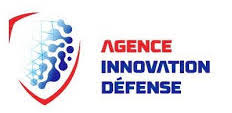
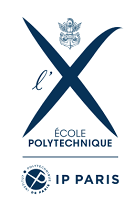
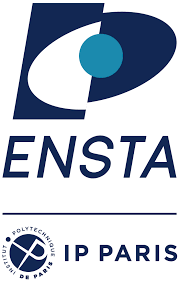
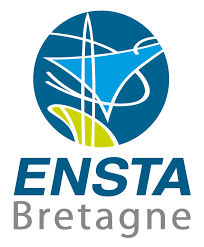
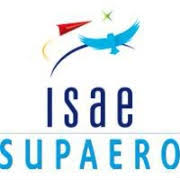
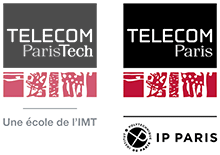
Journées scientifiques projet AID CIEDS FARO
Date
June 15/16, 2022 -- ENSTA Paris
Room
1314
Attendees
Ecole polytechnique: Eric Goubault, Sylvie Putot, Sergio Mover, Mathilde Jeannin, Elena Ivanova, Bernardo Hummes, Maria Luiza
ENSTA Paris: Goran Frehse, François Goulette, Julien Alexandre dit Sandretto, Alexandre Chapoutot
Télécom Paris: Samuel Tardieu, Aymeric Ploton
ENSTA Bretagne: Luc Jaulin, Simon Rohou, Damien Massé, Aaronkumar Ehambram, Julien Damers
ISAE Supaéro: Christophe Garion, Xavier Thirioux, Lelio Brun, Baptiste Pollien
AID: Jean-Daniel Masson
Schedule - June 15, 2022
14h00 - Start
Session 1:
14h15 - Aaronkumar Ehambram
Hybrid Interval-Probabilistic Localization in Building Maps (Slides)
We present a novel online capable hybrid interval- probabilistic localization method using publicly available 2D building maps. Given an initially large uncertainty for the orientation and position derived from GNSS data and measure- ments provided by a 3D Light Detection and Ranging (LiDAR) sensor, our novel interval-based approach narrows down the orientation to a smaller interval and provides a set described by a minimal polygon for the position of the vehicle that encloses the feasible set of poses by taking the building geometry into account. We use the result of the set-membership approach for a Maximum Likelihood Estimation (MLE) to determine the best solution within the feasible set.
Contributors: Aaronkumar Ehambram, Luc Jaulin, Bernardo Wagner
14h45 - Luc Jaulin
Fuzzy set estimation using interval tools; Application to localization (Slides)
We propose a new approach to characterize alpha-cuts of fuzzy sets using interval analysis and interval solvers. The information representing the random vector is represented by a membership function, which is issued from the composition of a score function and a characteristic function associated to some elementary epistemic sets, considered as the elementary granules of knowledge. Each granule is attached to a given measurement or any other elementary information we have on the vector to be estimated. The proposed approach will make it possible to obtain an efficient interval-based algorithm able to find an inner and an outer approximation of the \alpha-cut to be characterized. An application related to the localization of an underwater robot will be presented to illustrate the efficiency of the approach.
Contributors: J. Tillet, L. Jaulin, F. Le Bars, R. Boukezzoula
Session 2:
15h15 - Julien Damers
Lie symmetries applied to mobile robotics, application to reachability analysis and localisation (Slides)
We present a new approach to perform guaranteed integration, using the symmetries of the dynamical system studied, to increase the robustness against uncertainties on the initial condition. This new method combines both interval analysis and Lie symmetries. The proposed approach allows easy computation of both the inner and outer approximations of the solution set. We will illustrate its efficiency and ability to be used with other interval analysis tools through a reachability analysis problem and a localisation problem.
Contributors: J. Damers, L. Jaulin, S. Rohou
15h45 - Sylvie Putot
RINO: Robust INner and Outer Approximated Reachability of Neural Networks Controlled Systems (Slides)
We present a unified approach, implemented in the RINO tool, for the computation of inner and outer-approximations of reach- able sets of discrete-time and continuous-time dynamical systems, pos- sibly controlled by neural networks with differentiable activation func- tions. RINO combines a zonotopic set representation with generalized mean-value AE extensions to compute under and over-approximations of the robust range of differentiable functions, and applies these tech- niques to the particular case of learning-enabled dynamical systems. The AE extensions require an efficient and accurate evaluation of the func- tion and its Jacobian with respect to the inputs and initial conditions. For continuous-time systems, possibly controlled by neural networks, the function to evaluate is the solution of the dynamical system. It is over- approximated in RINO using Taylor methods in time coupled with a set- based evaluation with zonotopes. We demonstrate the good performances of RINO compared to state-of-the art tools Verisig 2.0 and ReachNN on a set of classical benchmark examples of neural network controlled closed loop systems. For generally comparable precision to Verisig 2.0 and higher precision than ReachNN, RINO is always at least one or- der of magnitude faster, while also computing the more involved inner- approximations that the other tools do not compute.
Contributors: Eric Goubault and Sylvie Putot
Session 3:
16h15 - Baptiste Pollien
Paparazzi UAV Flight Plan Generator Verified in Coq (Slides)
Paparazzi UAV autopilot has a specific language to define flight plans. It is a programming and modeling language allowing the expression of complex missions. This language is translated into C code and integrated with the rest of the Paparazzi environment. It allows the drone to perform the specified mission. The code generator (currently written in the Ocaml language) which translates missions into C code is a critical element of the proper functioning of a drone in autonomy. It is necessary to ensure that the mission is well translated into an equivalent C code. It is also important to guarantee this C code is well integrated into the rest of the Paparazzi code without creating malfunctions. This talk presents an ongoing work on a new generator developed in Coq and how we prove formally the correction of this code generator.
Contributors: Christophe Garion, Baptiste Pollien and Xavier Thirioux
Partner interaction
17h15 - Discussion
17h30 - End of the first day
Social event
19h30 - Repas à la Brasserie Le Zeyer -- 62 Rue d'Alésia, 75014 Paris
Schedule - June 16, 2022
9h00 - Coffee break
9h15 - Eric Goubault and Bernardo Hummes
Swarm robotics: a survey on results on the look-compute-move model (Slides - part1 and Slides - part2)
In the first part of this presentation, we will go through classical results in fault-tolerant distributed computing, with a particular emphasis on formalisation, and impossibility results. Indeed, the domain is subtle and it is important to get a feeling of what is possible or not, according to underlying communication constraints in particular.
Recent results have allowed for the correspondence between distributed computing and theoretical robotics. An equivalence between the Wait-Free Shared-Memory (WFSM) model and the Extended Asynchronous Luminous Robots (EALR) model has been recently proven, and alongside it a connection between the consensus problem in WFSM and the gathering problem in EALR. Several other results have been shown within the Look-Compute-Move model and we intend to link some of them to this new framework, in the second part of this talk.
Contributors: Eric Goubaut and Bernardo Hummes